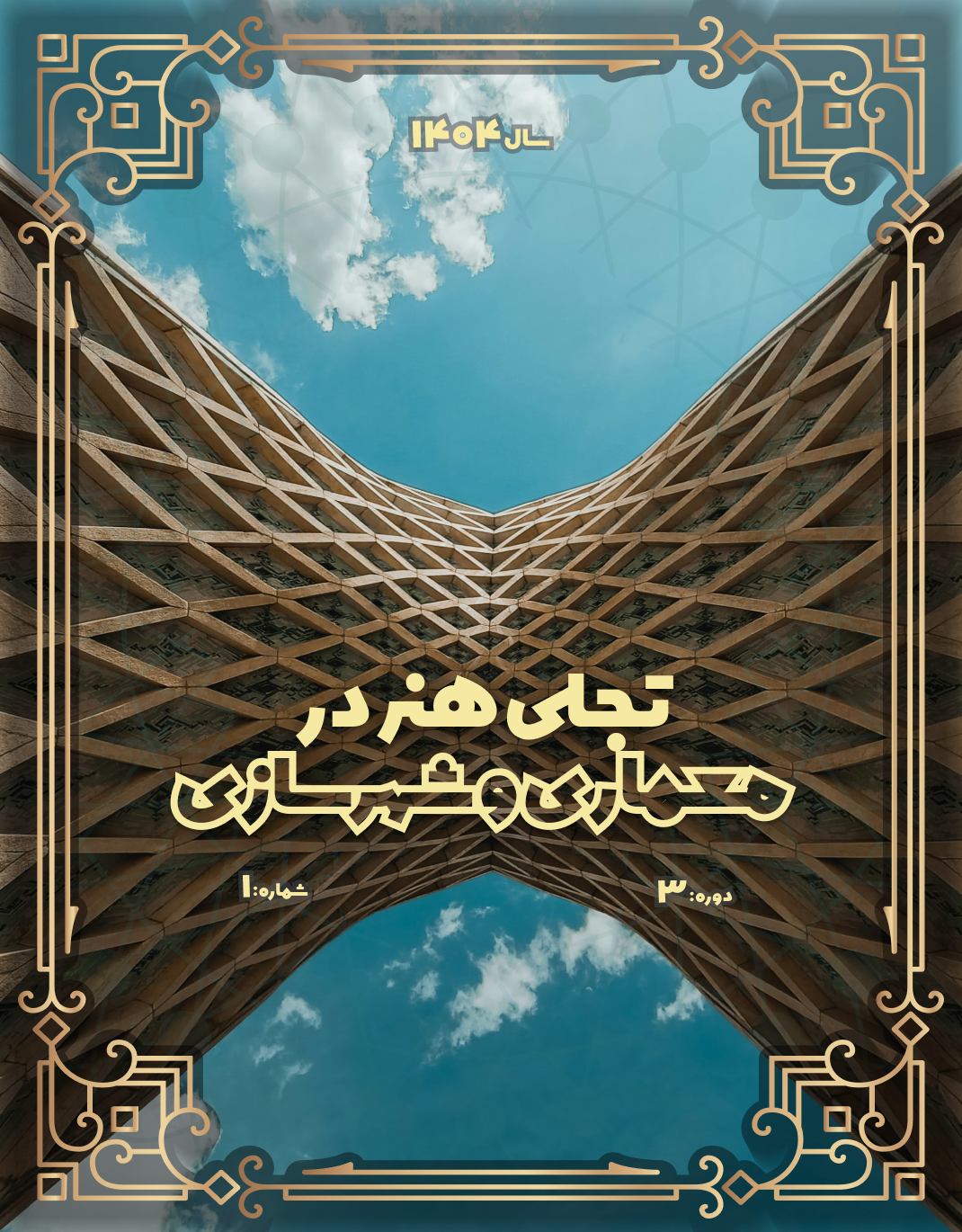Examining the Role of Revitalization of Lost Spaces in Urban Sustainable Development with an Emphasis on Contemporary Approaches (Case Study: Kerman Traditional Bazaar)
Keywords:
Revitalization, lost spaces, sustainable urban development, new approaches , Kerman traditional marketsAbstract
The present study investigates the role of revitalization of lost spaces in urban sustainable development with an emphasis on contemporary approaches in the context of the traditional bazaar of Kerman. The research is applied in nature and exploratory-explanatory in approach, conducted using a mixed-method (qualitative-quantitative) design. The qualitative population consists of experts and specialists in architecture, tourism, and cultural heritage, while the quantitative population includes local (native) residents around the traditional bazaars of Kerman. A purposive snowball sampling method was used to select 12 participants from the first group, and a simple random sampling method was used to select 92 participants from the second group. For data analysis, grounded theory was applied in the qualitative phase, and structural equation modeling (SEM) was used in the quantitative phase. The findings derived from grounded theory in the qualitative section revealed that information behavior, through seven components—namely recognition of the dimensions of deterioration and the regressive trajectory of lost spaces, as well as identification of regional resources and opportunities—affects the realization of conservation principles and the revitalization process. The realization of conservation principles and the revitalization process, in turn, leads to the physical, economic, and socio-cultural revitalization of lost spaces. Furthermore, government policies—including legislation and implementation—serve as contextual conditions, while contemporary (technological) approaches act as intervening factors influencing the revitalization of lost spaces, ultimately resulting in economic, physical, and socio-historical development. Quantitative findings derived from structural equation modeling also confirmed the qualitative results. Specifically: recognition of the dimensions of deterioration and the regressive trajectory of lost spaces has a significant effect on the realization of conservation principles and the revitalization process; identification of regional resources and opportunities has a significant effect on the realization of conservation principles and the revitalization process; the realization of conservation principles and the revitalization process significantly affects the revitalization of lost spaces; contemporary approaches have a significant effect on the revitalization of lost spaces; government policies have a significant effect on the revitalization of lost spaces; and finally, the revitalization of lost spaces has a significant impact on urban sustainable development.
Downloads
References
1. Peng Y, Lai Y, Li X, Zhang X. An alternative model for measuring the sustainability of urban regeneration: the way forward. Cleaner Production. 2015:1-8.
2. Sobieraj J, Metelski D. Innovative Approaches to Urban Revitalization: Lessons from the Fort Bema Park and Residential Complex Project in Warsaw. Buildings. 2025;15(4):538.
3. Zhan B, Su J, Gao H, Xu K. How does the reconstruction of residential space impact displaced farmers' post-resettlement adaptation during urbanisation in China? A perspective of spatial production. Habitat International. 2025;159:103353.
4. Daba SD, Tyagi P, Brown-Guedira G, Mohammadi M. Genome-wide association study in historical and contemporary U.S. winter wheats identifies height-reducing loci. The Crop Journal. 2019.
5. Aggelakopoulou E, Bakolas A, Moropoulou A. Design and evaluation of concrete for restoration interventions on Byzantine monuments. Journal of Cultural Heritage. 2018;34:166-71.
6. Yuryeva TV, Malykhin SA, Kudryavtsev AA, Afanasyev IB, Yuryev VA. CdZnSSe crystals synthesized in silicate glass: Structure, cathodoluminescence, band gap, discovery in historical glass, and possible applications in contemporary technology. Materials Research Bulletin. 2020;123:110704.
7. Cohen G. Technology Transfer, Strategic Management in Developing Countries. New Delhi, California and London: SAGE Publications; 2014.
8. Transik R. Finding Lost Space1986.
9. Lin Y. Identifying Perceptions Of The Creative Class Regarding Lost Space In Downtown Dallas 2012.
10. Wu Z, Huang Y, Guan Y, Liu Q. Adaptive k-space learning and high-dimensional subsets embedding for parallel MRI reconstruction. Magnetic Resonance Letters. 2024.
11. Yang Y, Shen L, Sang M, Ding X. The impact of digitalization on urban sustainable development - An economic perspective. Technological Forecasting and Social Change. 2025;212:124005.
12. Malene F-P. Sustainable urban futures from transportation and planning to networked urban mobilities. Transportation Research Part D: Transport and Environment. 2020;82:102310.
13. Lima JP, da Silva R, da Silva ANR. Evaluation and selection of alternatives for the promotion of sustainable urban mobility. Procedia - Social and Behavioral Sciences. 2014;162:428-18.
14. Dong F, Wang S, Yang G. Comprehensive index of extreme climate risk in China and urban sustainable development. Chinese Journal of Population, Resources and Environment. 2025;23(1):62-74.
15. Clyatt KA, Crotteau JS, Schaedel MS, Wiggins HL, Larson AJ. Historical spatial patterns and contemporary tree mortality in dry mixed-conifer forests. Forest Ecology and Management. 2016;361:23-37.
16. Gao L-l, Lu H, Leap N, Homer C. A review of midwifery in mainland China: Contemporary developments within historical, economic and sociopolitical contexts. Women and Birth. 2019;32(2):279-83.
17. Munteanu C, Nita MD, Abrudan IV, Radeloff VC. Historical forest management in Romania is imposing strong legacies on contemporary forests and their management. Forest Ecology and Management. 2016;361:179-93.
Downloads
Published
Submitted
Revised
Accepted
Issue
Section
License
Copyright (c) 2025 Najmeh Mehrabi (Author); Reza Ahmadian; Reza Afhami (Author)

This work is licensed under a Creative Commons Attribution-NonCommercial 4.0 International License.










